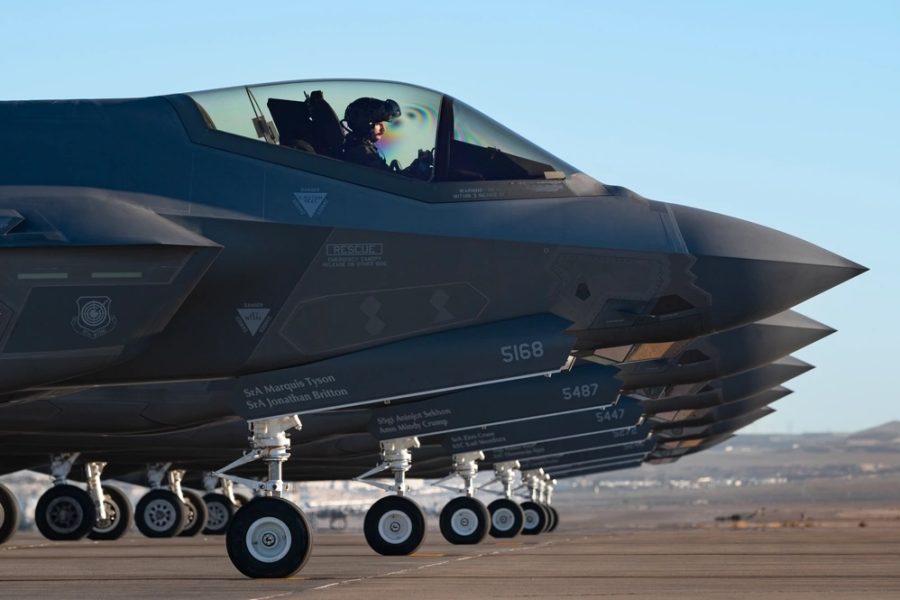Scores of brand-new F-35s now in storage could start to be delivered as soon as next month after nearly a year’s delay, if the current build of the Tech Refresh 3 software proves stable and safe, the Joint Program Office said.
F-35 users, including the U.S. services, have agreed to provisionally accept something less than the full TR-3 software package in order to get deliveries moving—what the JPO calls a “truncated” version—and that package is getting closer to being approved, a JPO spokesperson said.
“The software has to be stable, capable and maintainable, and is going through a rigorous testing regime to ensure it is ready for pilots to use safely,” the spokesperson said. The JPO won’t provide the metrics that will satisfy Program Executive Officer Lt. Gen. Michael Schmidt that the software meets those conditions, “due to operational security concerns.” However, “that information will be shared with the services, partners, and FMS customers as appropriate.”
Once the software is deemed safe and stable, and the “TR-3 truncation acceptance plan is approved, the software will be installed on the aircraft, a fairly simple procedure, and the aircraft will be DD250’d,” the spokesperson said, a reference to the document and process by which the government accepts an aircraft from the contractor.
July, however, is a date that “bears some risk,” because of what may still turn up in testing, the JPO said.
Industry and government sources have said that stability of the software is the biggest issue in testing right now, because the system can freeze during a mission and require reboots. Sources said this can happen multiple times in a sortie, creating potential safety issues if it occurs outside of a test environment, where the issue is well understood—if exasperating—and where there are ready backups.
Lockheed has built at least 80 airplanes in the TR-3 configuration that have gone directly to storage while the full TR-3 package has been tested.
The Government Accountability Office recently estimated that it would take about a year to deliver all those airplanes, because new ones are still coming off the production line, and Lockheed has never shown that it can deliver at its projected rate of one per day. The GAO also said Lockheed is running out of room to store the jets and will have to find another place to park them if deliveries don’t resume soon. Neither the JPO nor Lockheed will say where the jets are being stored due to security concerns.
The TR-3 is a package of powerful new processors, a new cockpit display, and software to run it all. It is the basis of the planned Block 4 upgrade, which Schmidt recently told Congress will have to be “re-imagined,” and some aspects of which will slip to the 2030s, due to cumulative delays.
The House Armed Services Committee, in its markups of the fiscal 2025 defense bill, would cut about a third of the planned 2025 F-35 buy and use the money to beef up the program’s test infrastructure, software integration labs, and a second flying integration lab, in order to accelerate the addition of new capabilities like the TR-3. That package would include nine new F-35 test jets. If authorized and appropriated, however, none of the new jets would be delivered for several years.
The stored F-35s would go to numerous users, including all three U.S. services and a number of partners and Foreign Military Sales customers.
